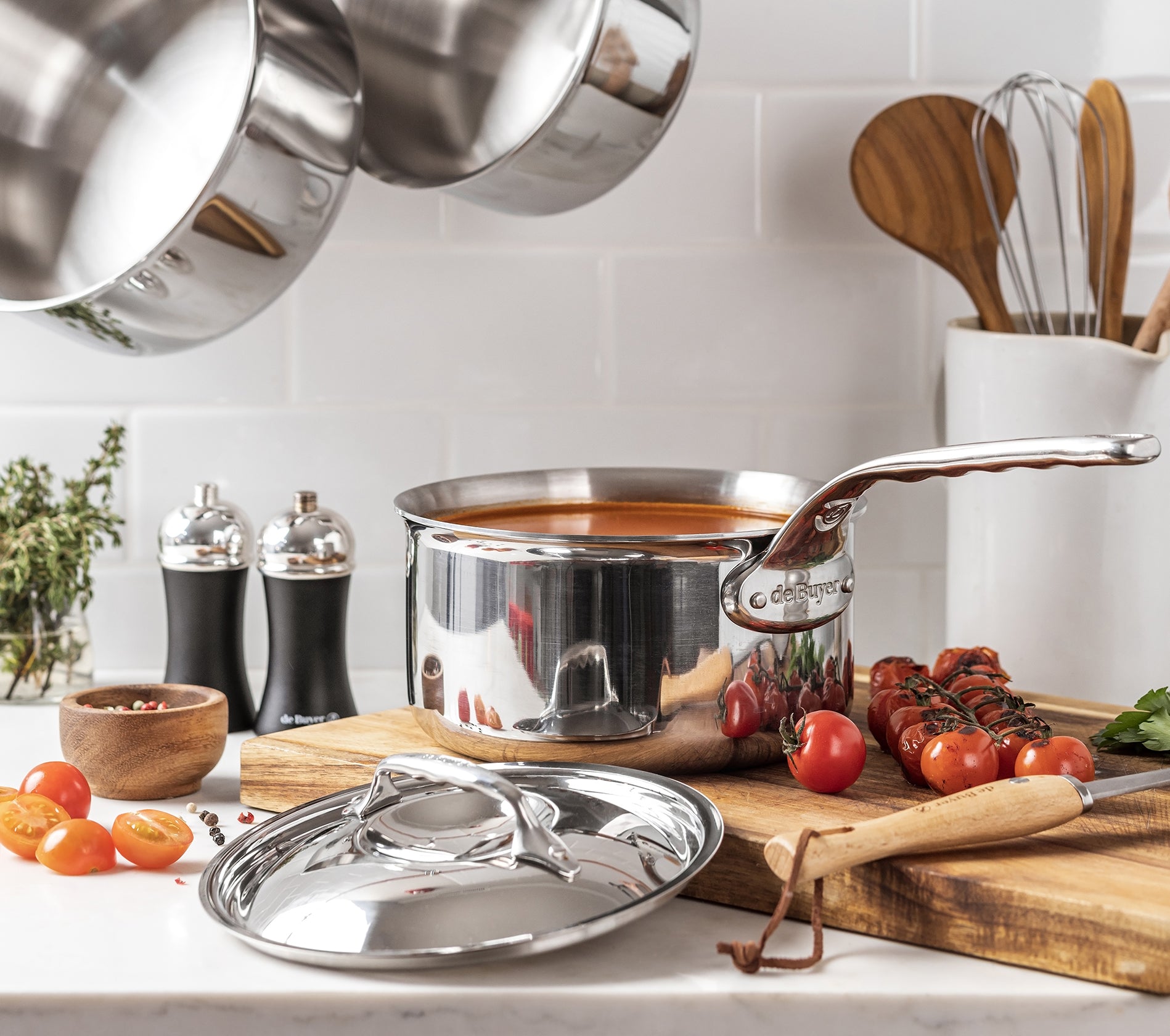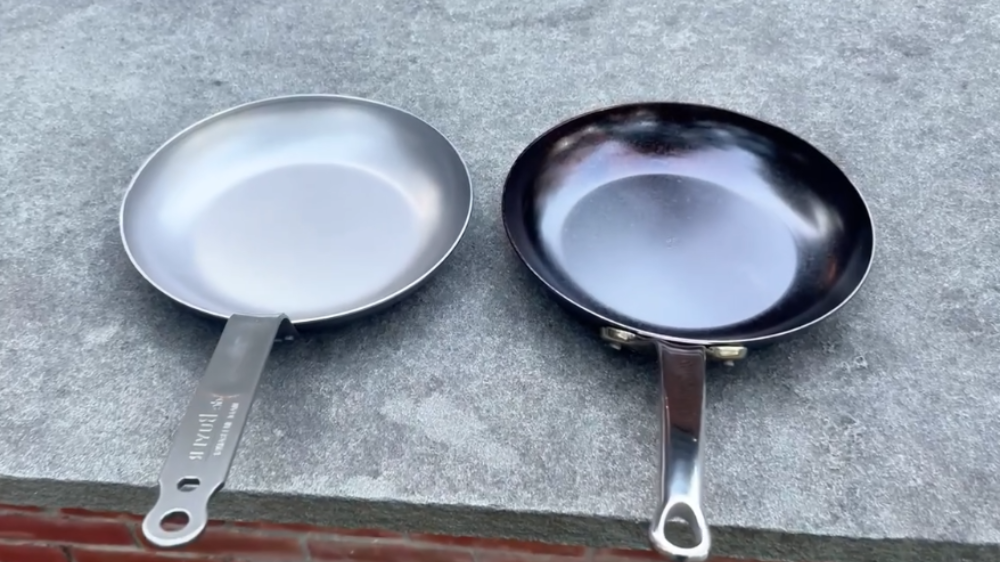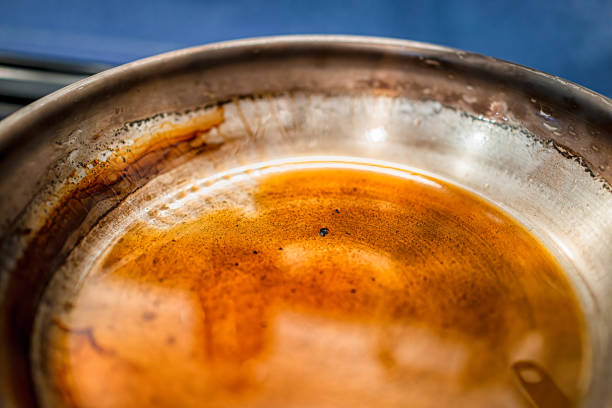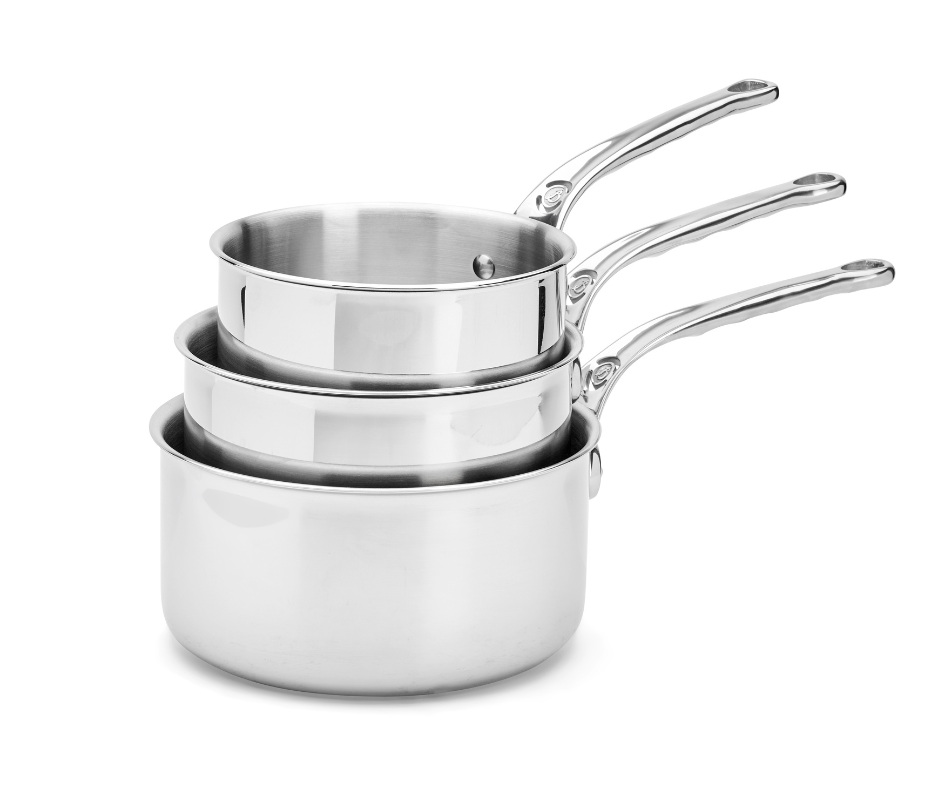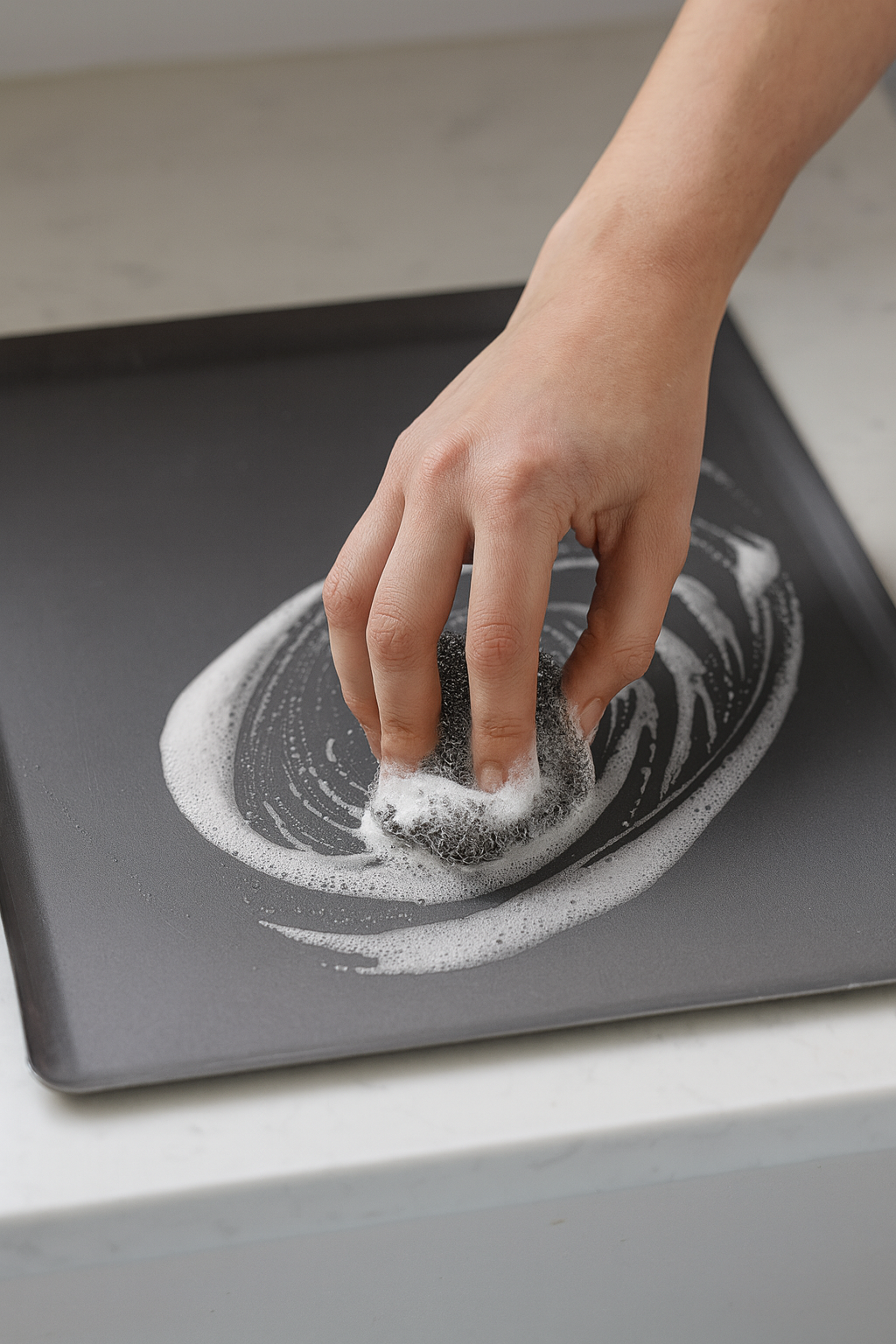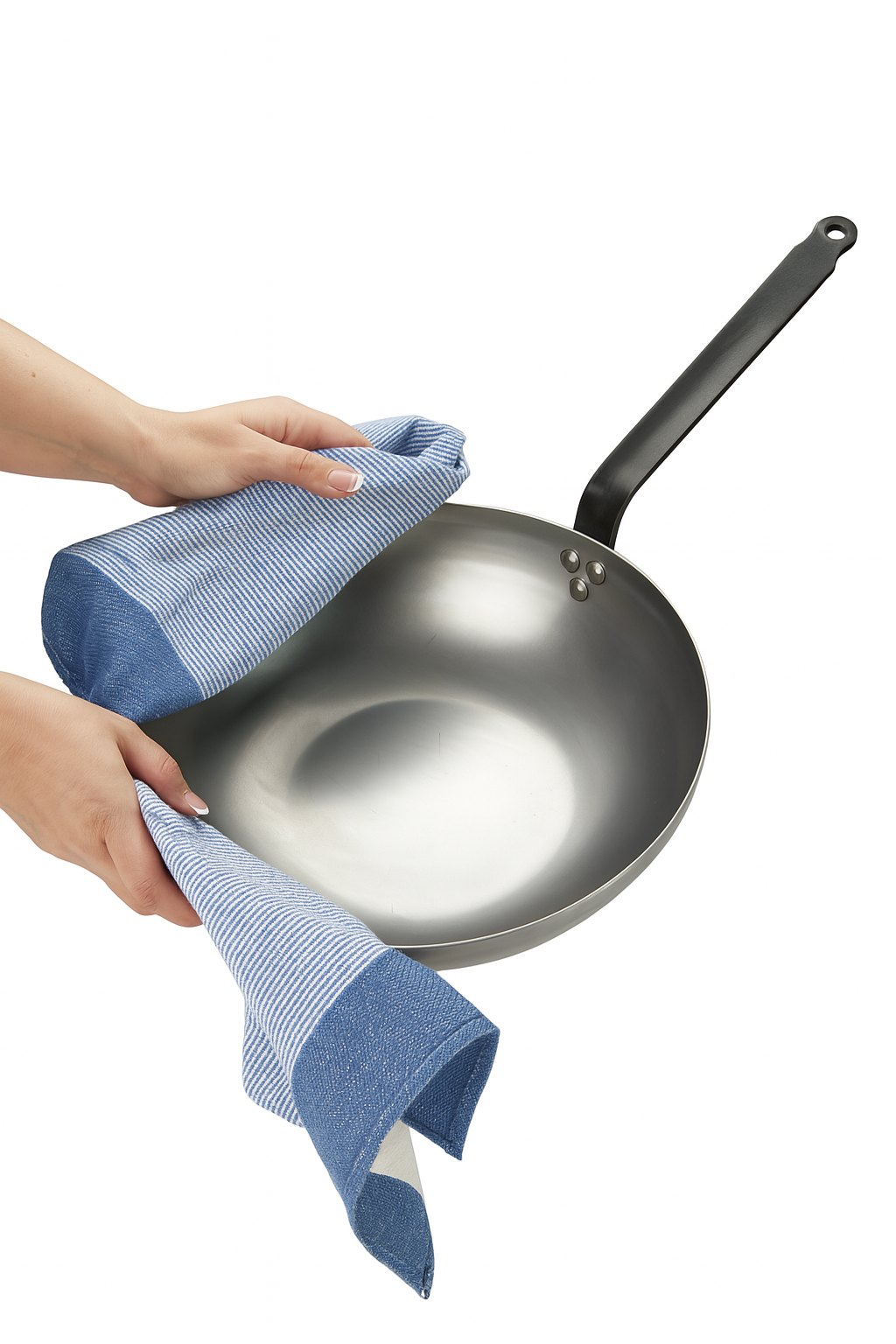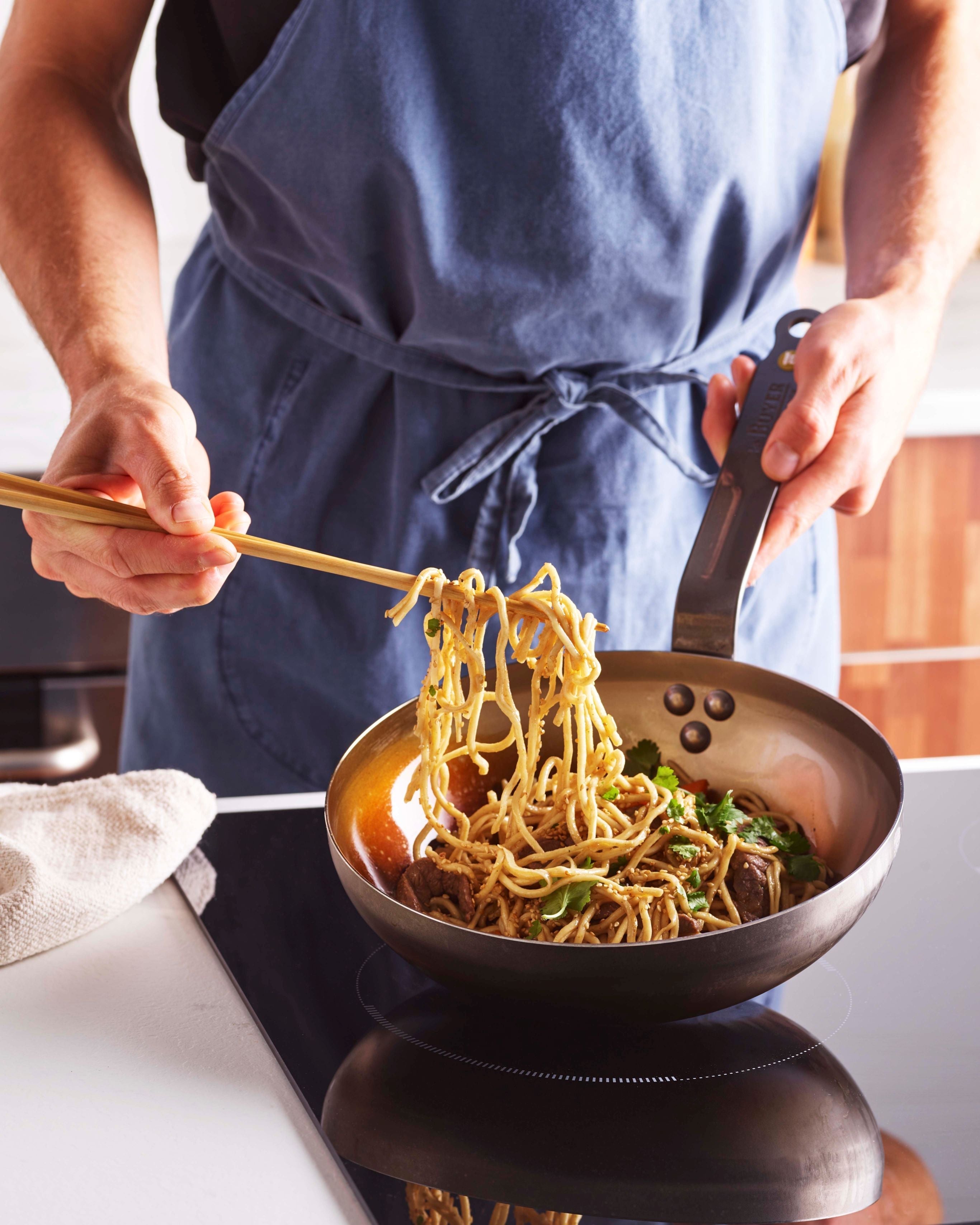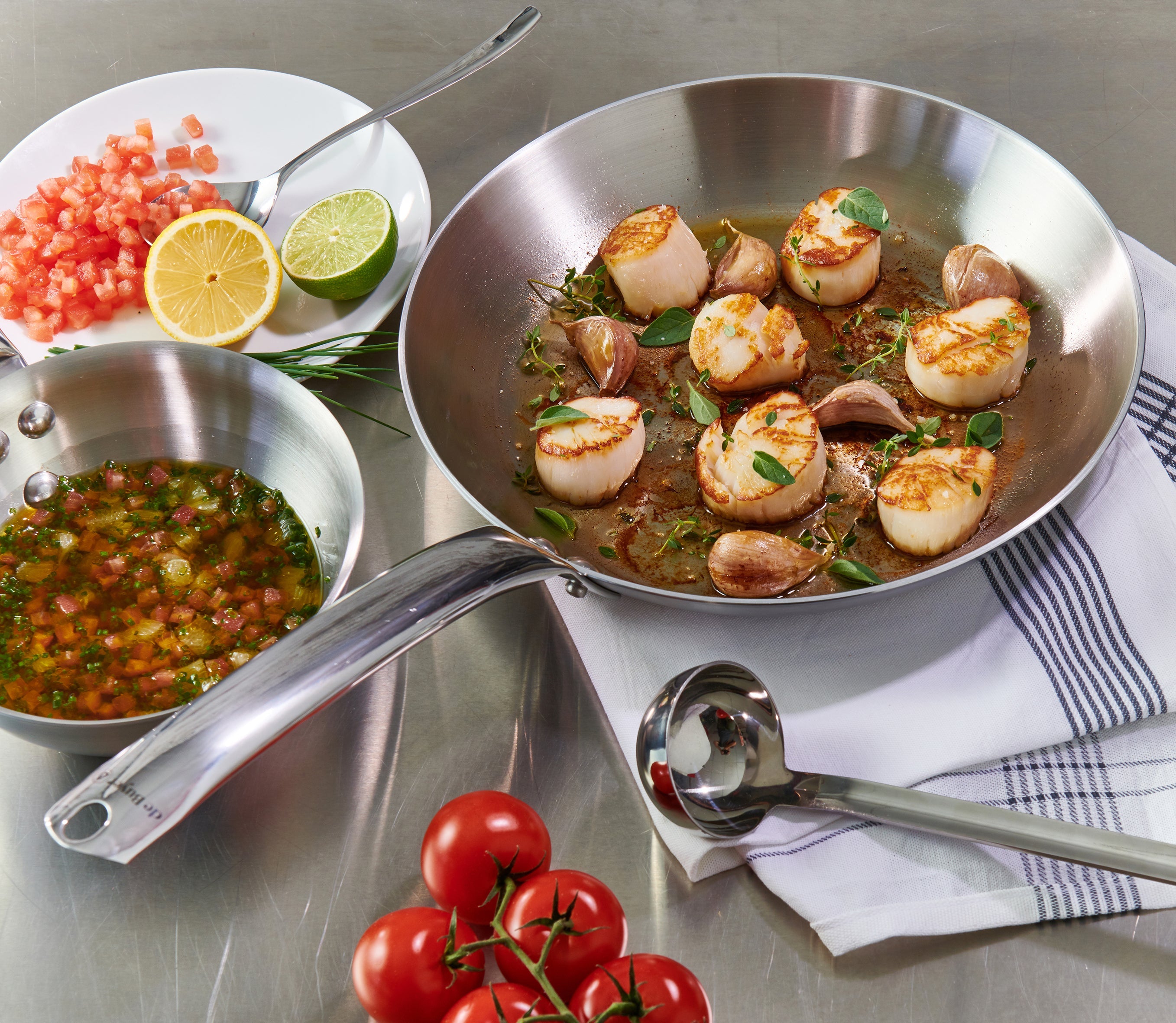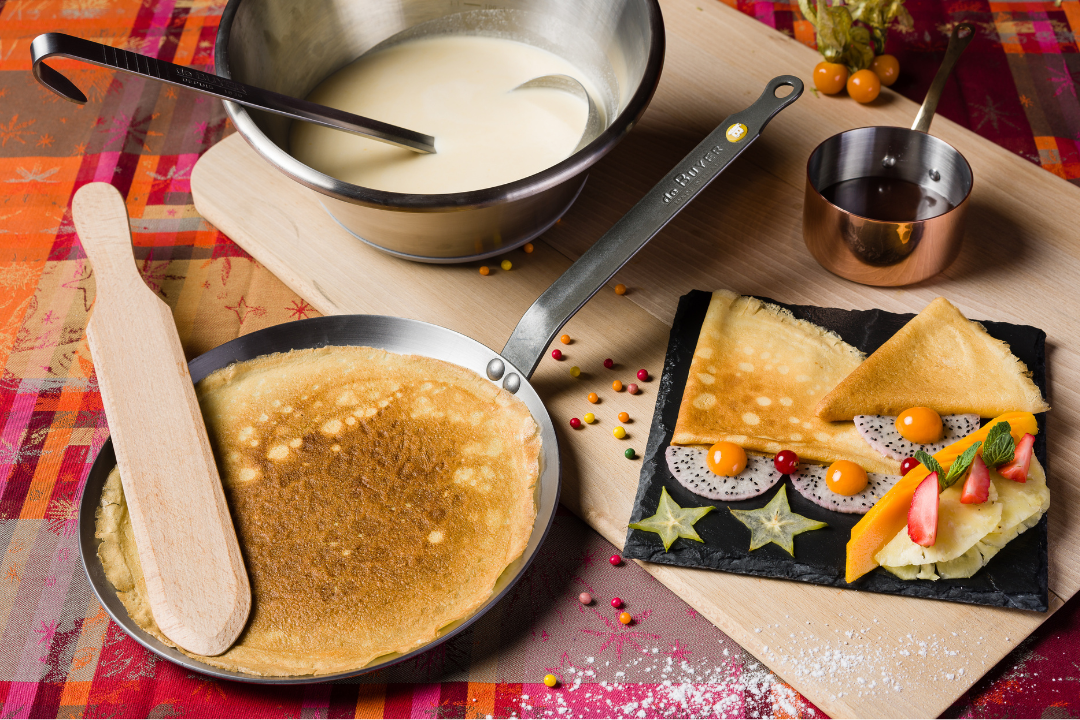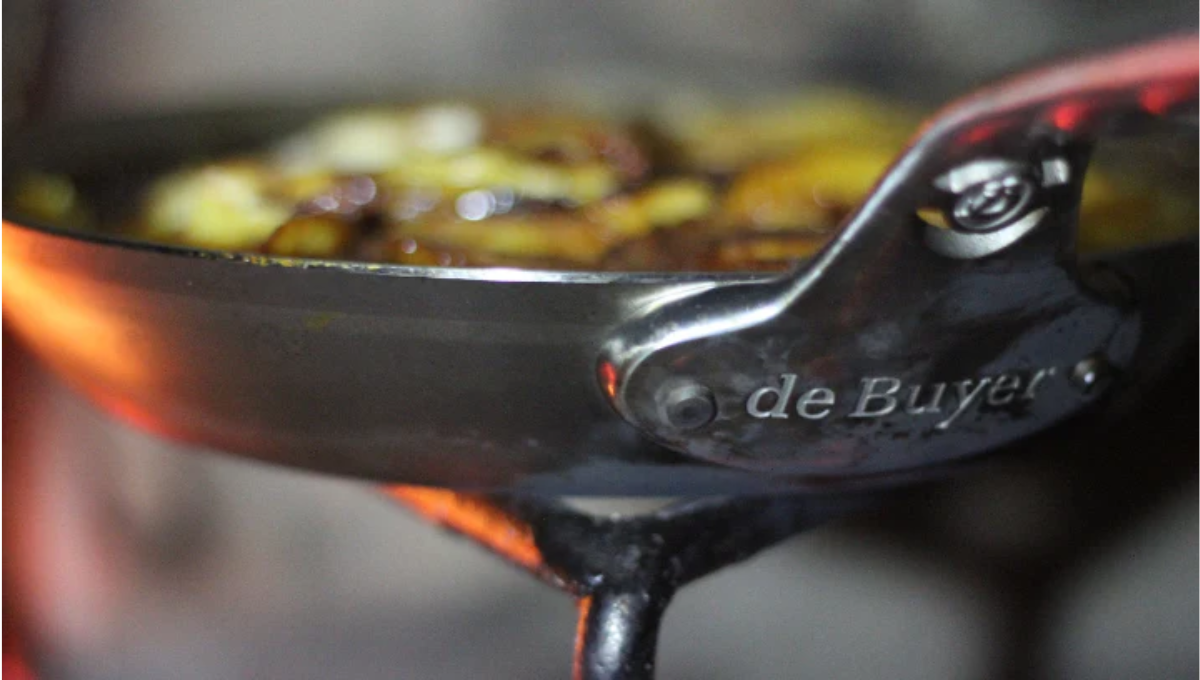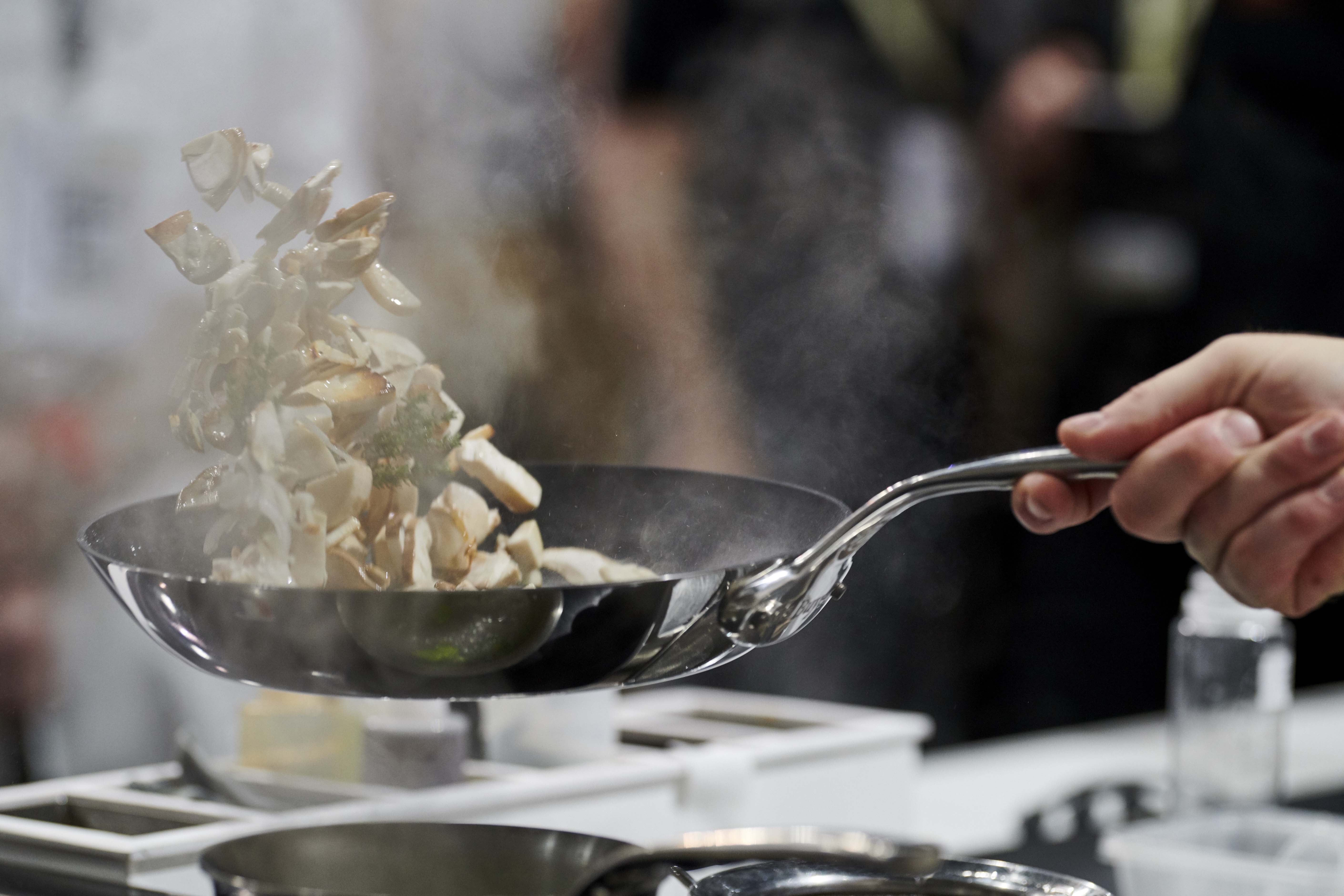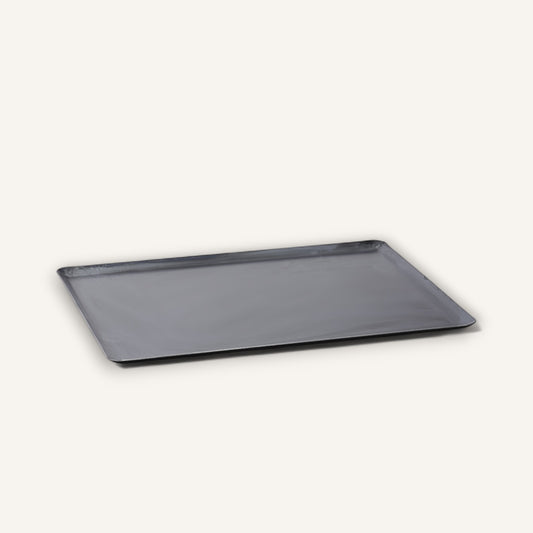Stainless steel cookware offers countless benefits. It helps you master the perfect sear on a thick cut of steak, caramelize onions to perfection, and sautée fresh garden veggies to achieve the perfect bite. To ensure that it continues to give you the best benefits it can offer, you’ve got to treat it right. That means cleaning and caring for your stainless steel cookware properly.
The Best Methods for Cleaning Your Stainless Steel Cookware
There are several cleaning methods that will help you retain that pristine shine that stainless steel is known for. Here are the best ways to clean and care for your stainless steel pots and pans.
Related: How to Tell if Cookware is Oven Safe
Clean With Dish Soap and Water

When you unbox your stainless for the first time, the dish soap and water method is the perfect way to get it ready to hit the stove. It’s a gentle cleanse that will get rid of packaging debris without overdoing it. This method is also your go-to for removing dry water spots that might remain after you’ve put it through the dishwasher. If you love the way your stainless looks displayed in the kitchen, the soap and water rinse and a simple towel dry will help keep it spotless and sparkling.
Are you minimizing the mess of cooking? We have food dispensers to simplify the process!
Clean With Baking Soda and Water
When cold food is added to a hot pan, you end up with more stubborn stains and sometimes, stuck-on food. A simple mix of baking soda and water offers a slightly more abrasive cleaning method for tougher stains.
Relate: What’s the Best Cookware Material?
Clean With Vinegar
Your pans will look as good as new with a splash of diluted white vinegar. Add a little bit of water, followed by white vinegar, to your pan. Using a soft sponge (nothing abrasive that might cause damage), whoosh the water mixture around and gently scrub. This method can also be used to polish your stainless set and return its like-new appearance. It’s a great way to remove water spots too, just make sure you dry your pans completely before putting them away.
Wash in the Dishwasher
If your stainless steel is dishwasher safe, then simply pop it in the machine for a regular clean after use. De buyer stainless steel is dishwasher safe, making it a smart choice for superior performance and quick clean-up. Keep in mind that the dishwasher can sometimes leave water spots behind, but these can be avoided if you hand dry your pans just after the wash cycle finishes. Alternatively, a quick soap and water rinse and towel dry will easily remove water spots.
Related: What You Need to Know Before Cooking with Stainless Steel
How to Tackle Problem Areas

No matter what gets stuck on your precious stainless, there’s an easy way to get it back to its former, shimmering self. Understanding how to manage each specific issue is the key to cleaning with ease. Here’s a breakdown of which method to use for the best results, depending on the problem you’re trying to target.
Avoid creating problem areas
The first step to treating problem areas is to not create them in the first place. And the simplest way to do that is by cleaning your pots and pans immediately after use (or at least right after dinner). When you tackle stains and build up when they’re fresh, you have an easier chance of removal. First, take a paper towel and soak up any leftover oil and loose bits of food. Then, use hot water and a drop of dish soap and wipe the inside with a soft sponge.
White water stains and chalky residue
This happens for two reasons. It’s either because you have hard, mineral dense water, or because water was left to air dry on the pan. But thankfully, that’s no match for the vinegar treatment. Put three parts vinegar and one part water in the pan and bring it to a boil. Let the contents cool, then dispose of the water mixture. At this point, you can clean with soapy water and you should see those marks disappear.
Discoloring
If your pans have taken on unsightly hues from their contents, then a vinegar treatment can help restore them back to their natural shade. This discoloration occurs when you’ve turned the heat up a little too high. A splash of diluted vinegar and water with a gentle sponge will take those rainbow colors right out.
Stuck on Food
For bits of food that won’t release, start by filling the pan with water. Then add 2-3 tablespoons of baking soda and let it come to a boil. This requires hawk-like supervision, otherwise, it’ll overflow. Turn down the heat to a low simmer and gently scrape the food bits using a wooden spoon. Let it cool, then dump the water, rinse, and dry as soon as possible to avoid spotting.
Tips for Caring for Stainless Steel
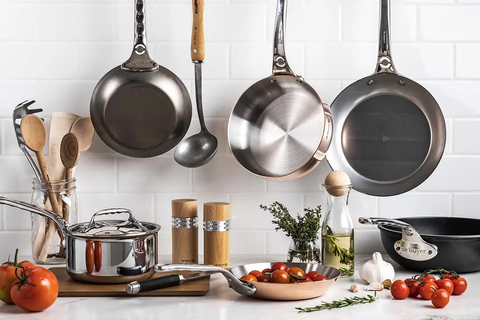
The goal for most of us is to spend more time cooking and less time cleaning, right? To avoid having to do anything other than putting your stainless in the dishwasher and calling it a day, there are a few things you can do to keep your prized pots and pans clean.
How you cook with this material has a lot to do with its tendency to collect stains and buildup. That starts with the way you heat it and the point at which it comes into contact with food. We have a tendency to add oil to the pan and then turn on the heat, but with stainless, remember heat first, oil later. Let the pan get hot before adding your cooking oil, then allow the oil to get hot before adding food. A hot pan is what allows the oil to create that coveted nonstick surface, meaning nothing gets left behind that you have to scrub out later.
Are you ready to explore more cookware? We have Carbon Steel options too!
Another pro-tip for cooking with stainless steel is to make sure you’re not putting cold food in a hot pan. Allow the food to temper outside of the fridge for about 15 minutes beforehand for best results and easier cleanup. Avoiding temperature extremes and heating and cooling slowly will ensure that your pots and pans stay clean.
Last but certainly not least, never use an abrasive cleaning device on stainless steel. Not only could it cause unsightly scars on the material, but if you have a warranty on your cookware, you might risk voiding it. Stick to the more gentle methods above, clean with the grain of the metal, and you’ll have clean stainless steel cookware that maintains its beauty and functionality for years to come.
For long-lasting cookware that gleans with age-defying shine, cleaning stainless steel the right way is all it takes. Once you understand the properties of this popular metal, you’ll be calling it your “culinary BFF” in no time!
